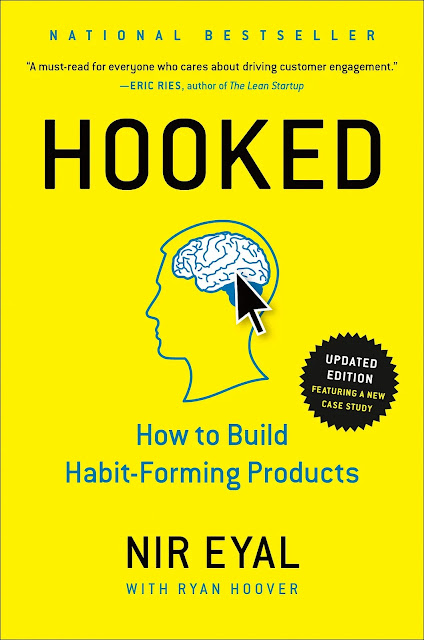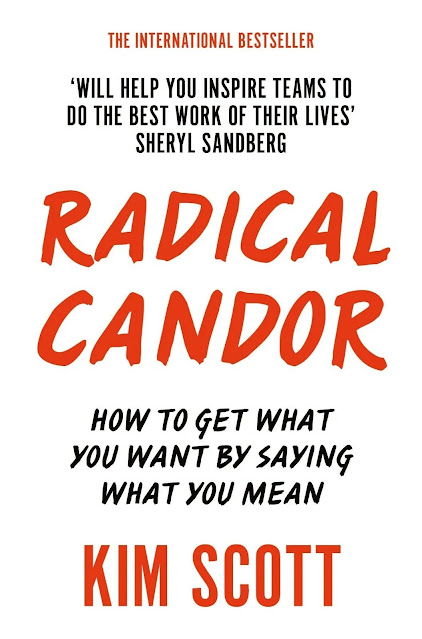10 Must Read Books for Product Designers
Disclaimer: The links on this page are affiliate links. I will receive a commission if you purchase something through my affiliate links.
1. The Design of Everyday Things by Don Norman
Even the smartest among us can feel inept as we fail to figure out which light switch or oven burner to turn on, or whether to push, pull, or slide a door. The fault, argues this ingenious,even liberating,book, lies not in ourselves, but in product design that ignores the needs of users and the principles of cognitive psychology. The problems range from ambiguous and hidden controls to arbitrary relationships between controls and functions, coupled with a lack of feedback or other assistance and unreasonable demands on memorization. The Design of Everyday Things shows that good, usable design is possible. The rules are simple: make things visible, exploit natural relationships that couple function and control, and make intelligent use of constraints. The goal: guide the user effortlessly to the right action on the right control at the right time.In this entertaining and insightful analysis, cognitive scientist Don Norman hails excellence of design as the most important key to regaining the competitive edge in influencing consumer behaviour. Now fully expanded and updated, with a new introduction by the author, The Design of Everyday Things is a powerful primer on how,and why,some products satisfy customers while others only frustrate them.
2. Hooked: How to Build Habit-Forming Products by Nir Eyal
Why do some products capture widespread attention while others flop? What makes us engage with certain products out of sheer habit? Is there a pattern underlying how technologies hook us?
Nir Eyal answers these questions (and many more) by explaining the Hook Model — a four-step process embedded into the products of many successful companies to subtly encourage customer behavior. Through consecutive “hook cycles,” these products reach their ultimate goal of bringing users back again and again without depending on costly advertising or aggressive messaging.
Hooked is based on Eyal’s years of research, consulting, and practical experience. He wrote the book he wished had been available to him as a start-up founder — not abstract theory, but a how-to guide for building better products. Hooked is written for product managers, designers, marketers, start-up founders, and anyone who seeks to understand how products influence our behavior.
Eyal provides readers with:
- Practical insights to create user habits that stick.
- Actionable steps for building products people love.
- Fascinating examples from the iPhone to Twitter, Pinterest to the Bible App, and many other habit-forming products.
3. Thinking, Fast and Slow by Daniel Kahneman
Why is there more chance we’ll believe something if it’s in a bold type face? Why are judges more likely to deny parole before lunch? Why do we assume a good-looking person will be more competent? The answer lies in the two ways we make choices: fast, intuitive thinking, and slow, rational thinking. This book reveals how our minds are tripped up by error and prejudice (even when we think we are being logical), and gives you practical techniques for slower, smarter thinking. It will enable to you make better decisions at work, at home, and in everything you do.
4. Radical Candor: How to Get What You Want by Saying What You Mean by Kim Scott
Radical Candor is the sweet spot between managers who are obnoxiously aggressive on the one side and ruinously empathetic on the other. It is about providing guidance, which involves a mix of praise as well as criticism, delivered to produce better results and help employees develop their skills and boundaries of success.
Great bosses have a strong relationship with their employees, and Kim Scott has identified three simple principles for building better relationships with your employees: make it personal, get stuff done, and understand why it matters.
Radical Candor offers a guide to those bewildered or exhausted by management, written for bosses and those who manage bosses. Drawing on years of first-hand experience, and distilled clearly to give actionable lessons to the reader, Radical Candor shows how to be successful while retaining your integrity and humanity. Radical Candor is the perfect handbook for those who are looking to find meaning in their job and create an environment where people both love their work, their colleagues and are motivated to strive to ever greater success.
5. Solving Product Design Exercises: Questions & Answers by Artiom Dashinsky
Learn how to solve and present exercises like these, that top startups use to interview designers for product design and UI/UX roles.
Today top companies are looking for business-minded designers who are not just focused on visuals. With this book you can practice this kind of mindset, prepare for job interview, learn how to interview other designers and find concepts for projects for your portfolio.
What will you learn from this book:
- Prepare for the design interview — prepare for the design exercise and learn more about how tech companies hire product designers.
- Improve your portfolio — use product challenges to showcase in your portfolio instead of unsolicited visual redesigns.
- Step up your design career — practice your product design skills to become a better designer and prepare for your next career move.
- Interview designers — learn how to interview designers to evaluate their skills in the most efficient and scalable way.
6. SPRINT by Jake, Zeratsky, John, Kowitz and Braden Knapp
This book by Jake Knapp is a practical guide to answer some important business questions like where’s the most important place to focus efforts, or how to start with solving problems by design. Sprint is a book for groups of any size, from small startups to Fortune 100s, from teachers to non-profits. It’s an indispensable read for every product designer with an opportunity, a problem, or an idea which needs to get answers today.
7. The Laws of Simplicity by John Maeda
Maeda―a professor in MIT’s Media Lab and a world-renowned graphic designer―explores the question of how we can redefine the notion of “improved” so that it doesn’t always mean something more, something added on.
Maeda’s first law of simplicity is “Reduce.” It’s not necessarily beneficial to add technology features just because we can. And the features that we do have must be organized (Law 2) in a sensible hierarchy so users aren’t distracted by features and functions they don’t need. But simplicity is not less just for the sake of less. Skip ahead to Law 9: “Failure: Accept the fact that some things can never be made simple.” Maeda’s concise guide to simplicity in the digital age shows us how this idea can be a cornerstone of organizations and their products―how it can drive both business and technology. We can learn to simplify without sacrificing comfort and meaning, and we can achieve the balance described in Law 10. This law, which Maeda calls “The One,” tells us: “Simplicity is about subtracting the obvious, and adding the meaningful.”
8. About Face: The Essentials of Interaction Design by Alan Cooper
About Face: The Essentials of Interaction Design, Fourth Edition is the latest update to the book that shaped and evolved the landscape of interaction design. This comprehensive guide takes the worldwide shift to smartphones and tablets into account. New information includes discussions on mobile apps, touch interfaces, screen size considerations, and more. The new full-color interior and unique layout better illustrate modern design concepts.
The interaction design profession is blooming with the success of design-intensive companies, priming customers to expect “design” as a critical ingredient of marketplace success. Consumers have little tolerance for websites, apps, and devices that don’t live up to their expectations, and the responding shift in business philosophy has become widespread. About Face is the book that brought interaction design out of the research labs and into the everyday lexicon, and the updated Fourth Edition continues to lead the way with ideas and methods relevant to today’s design practitioners and developers.
Updated information includes:
- Contemporary interface, interaction, and product design methods
- Design for mobile platforms and consumer electronics
- State-of-the-art interface recommendations and up-to-date examples
- Updated Goal-Directed Design methodology
Designers and developers looking to remain relevant through the current shift in consumer technology habits will find About Face to be a comprehensive, essential resource.
9. Creative Confidence: Unleashing the Creative Potential Within Us All by Tom Kelley and David Kelley
Too often, companies and individuals assume that creativity and innovation are the domain of the “creative types.” But two of the leading experts in innovation, design, and creativity on the planet show us that each and every one of us is creative. In an incredibly entertaining and inspiring narrative that draws on countless stories from their work at IDEO, the Stanford d.school, and with many of the world’s top companies, David and Tom Kelley identify the principles and strategies that will allow us to tap into our creative potential in our work lives, and in our personal lives, and allow us to innovate in terms of how we approach and solve problems. It is a book that will help each of us be more productive and successful in our lives and in our careers.
10. The Best Interface Is No Interface by Golden Krishna
Our love affair with the digital interface is out of control. We’ve embraced it in the boardroom, the bedroom, and the bathroom.
Screens have taken over our lives. Most people spend over eight hours a day staring at a screen, and some “technological innovators” are hoping to grab even more of your eyeball time. You have screens in your pocket, in your car, on your appliances, and maybe even on your face. Average smartphone users check their phones 150 times a day, responding to the addictive buzz of Facebook or emails or Twitter.
Are you sick? There’s an app for that! Need to pray? There’s an app for that! Dead? Well, there’s an app for that, too! And most apps are intentionally addictive distractions that end up taking our attention away from things like family, friends, sleep, and oncoming traffic.
There’s a better way.
In this book, innovator Golden Krishna challenges our world of nagging, screen-based bondage, and shows how we can build a technologically advanced world without digital interfaces.
In his insightful, raw, and often hilarious criticism, Golden reveals fascinating ways to think beyond screens using three principles that lead to more meaningful innovation. Whether you’re working in technology, or just wary of a gadget-filled future, you’ll be enlighted and entertained while discovering that the best interface is no interface.
Thanks for reading!













Comments
Post a Comment